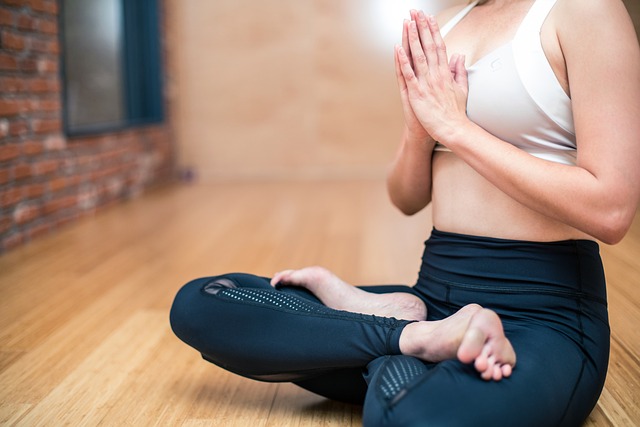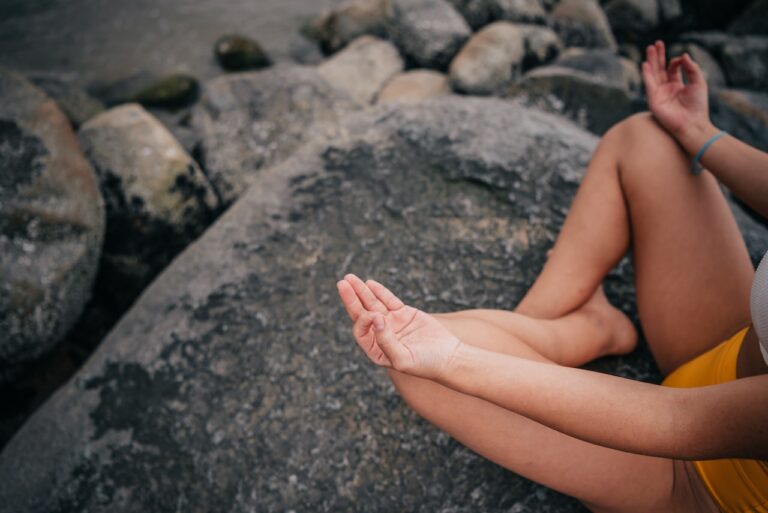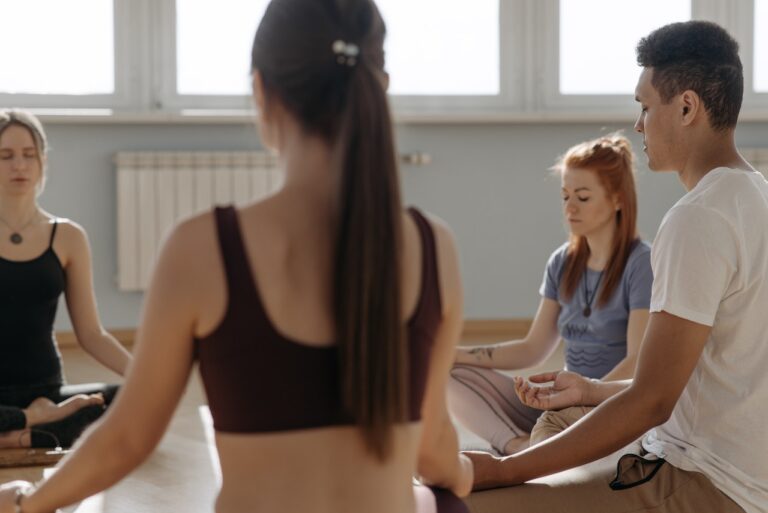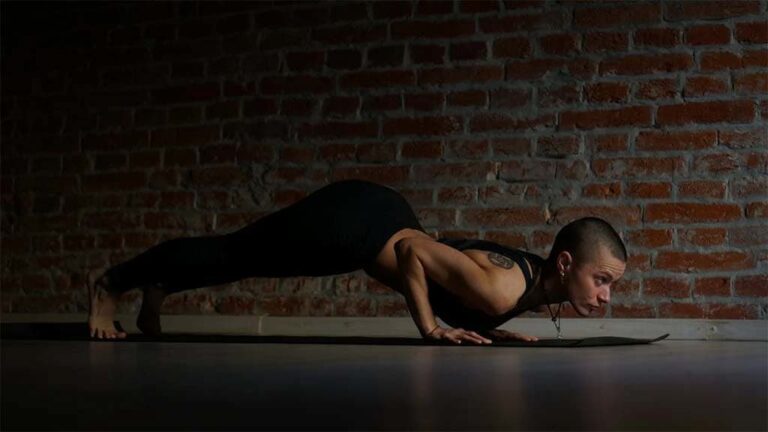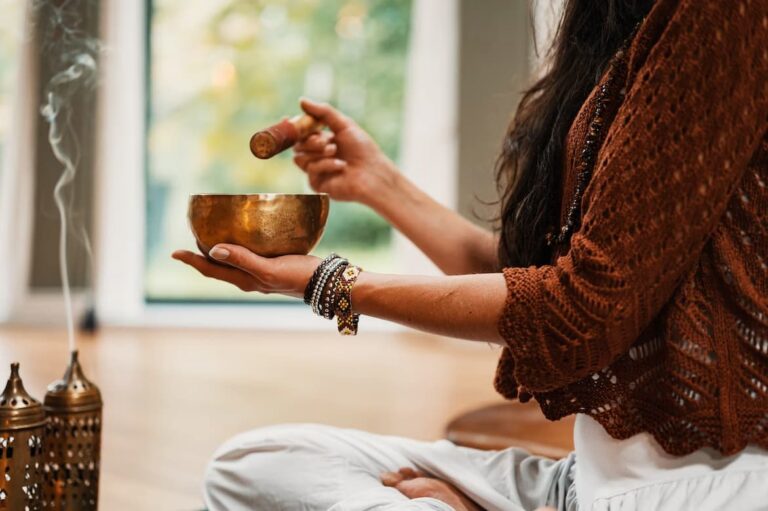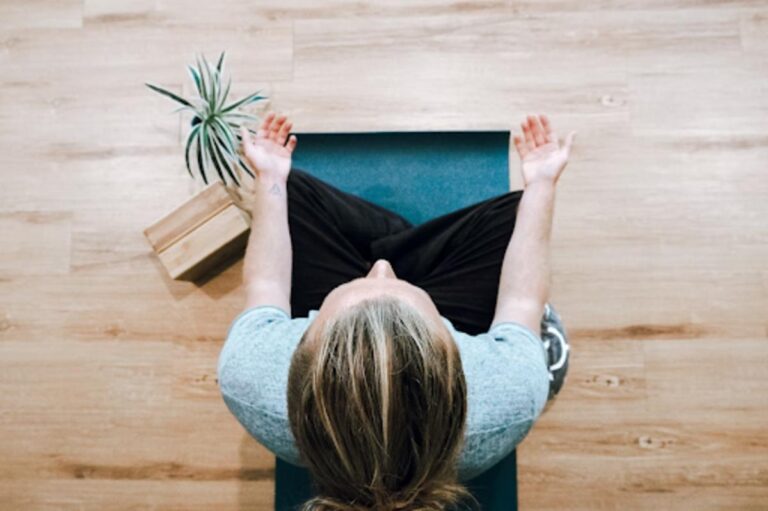Dear friend, if you’re just beginning your immersion in meditation practice, you’ll find our big guide, “how to start meditating for a beginner?” helpful. In one place, we’ve gathered for you all the materials you might need at the beginning of your practice. We have prepared this guide for you because at one time we were in great need of such a complete and comprehensible guide.
WHAT IS MEDITATION?

Meditation is a systematic exercise for the mind to develop awareness, mental clarity, and emotional balance. Meditation involves concentrating our attention, which is usually in a scattered and unfocused state. The habitual state of the mind is to jump from one thought to the next. The mind also often regrets the past and worries about the future. In the East, this state is called the “monkey mind,” and in neuropsychology it is called the default state or autopilot.
Meditation brings the wandering mind back to full experience of the present moment, calms it down, and makes perception clearer. Careful self-observation lets you know that incessant chattering is a normal activity of the mind, and you are free to decide for yourself whether or not to follow each thought that arises. Awareness of the emotions that arise in response to thoughts enables you to get away from template impulsive reactions and choose a wise response for yourself, adequate to the situation. Meditation is a very ancient practice and was originally used in a religious context to achieve spiritual goals. Most of the religions of the world have developed their own unique contemplative traditions.
There are also many types of secular or secular meditation devoid of a religious context. This means that your religious beliefs, or lack thereof, are not a hindrance to the practice of meditation. Most people practice meditation for their own health and well-being.
WHAT IS MINDFULNESS?
There are many different kinds of meditation. In recent decades, mindfulness meditation, or as they say in Russia, mindfulness practices, have become the most popular. In the West, it has become mainstream and a significant component of the comprehensive care of one’s health and well-being. Today it is the most scientifically studied form of meditation. Mindfulness is the natural human ability to be attentive and engaged in what is happening to us and around us in the present moment, without automatic judgment or criticism. Practicing mindfulness means directing attention to the present moment in a special way: without judgment, with kindness, curiosity, and acceptance. Mindfulness practice is an umbrella term for various ways of practicing attention. The arsenal of mindfulness practices includes: body scanning, loving kindness meditation, and many other meditations.
Mindfulness practice is a simple but very powerful and life-transforming attention training practice. It is important to understand that its power lies in practice and application. Every event in your life, including mental events, opens up new opportunities for you to practice. By practicing constantly, we gradually turn our actions into a habit. As you develop the habit of being fully present in what is happening, you will make mindfulness a style of your life.
The art of mindful living can be learned by anyone. You don’t have to be a Buddhist, practice yoga or go to the Himalayas. There are no limitations to the practice: it doesn’t matter your age, gender, physical abilities, or religious views. However, like any art, it requires constant improvement, but simply training. And the more you improve in it, the better results you achieve
WHY MEDITATE?
Since the 2000s, there has been a steadily growing interest in the scientific study of meditation and its effects on our brain, body and emotional well-being. The results of neuroscientists’ research are truly impressive. Mindfulness practices result in beneficial structural changes in the brain, resulting in positive changes in our lives.
- The ability to regulate emotions improves.
- Impulsive reactions are reduced.
- Stress tolerance is increased, you are better prepared for stressful events.
- You achieve better results in any activity due to the development of attentiveness and concentration.
- Relationships with people reach a new level of kindness, caring, sincerity, and depth.
Practicing mindfulness is like working in a mental gym. It requires some effort, but it cultivates strength and flexibility. Each time you practice, you strengthen your “mindfulness muscles. The meditator gradually changes the shape and function of his brain. Mindfulness becomes your habit.
Two wings of practice
The practice of meditation has two wings, the so-called formal and informal practices.
Formal practice
Formal practice is a meditation for which we set aside a special time and place in our lives. This is the time that we devote to ourselves, while putting aside all business. In these moments, we are engaged in “just being” in the here and now. Formal meditation makes our practice more profound.
Informal practice.
The second wing is informal practice, which requires no special place or time. It consists of bringing mindfulness into our daily routines. Integrating meditation into ordinary life expands our practice.
Both wings are equally important and interrelated. Without one of them, the practice is not complete. Informal practice complements formal practice. Meditation helps us to be present to what is happening in our daily activities, and focusing on the present moment in ordinary activities in turn helps meditation. This is why it is so important to integrate meditation into our activities every day.
Small moments of mindfulness during the day
Bringing mindfulness into ordinary activities turns them into meditation. You can use any moment of the day to fully focus on what’s going on. Try to do only one thing at a time. In the present moment, direct all of your attention to one action, whether it’s eating, walking, talking, creating, or doing chores.

